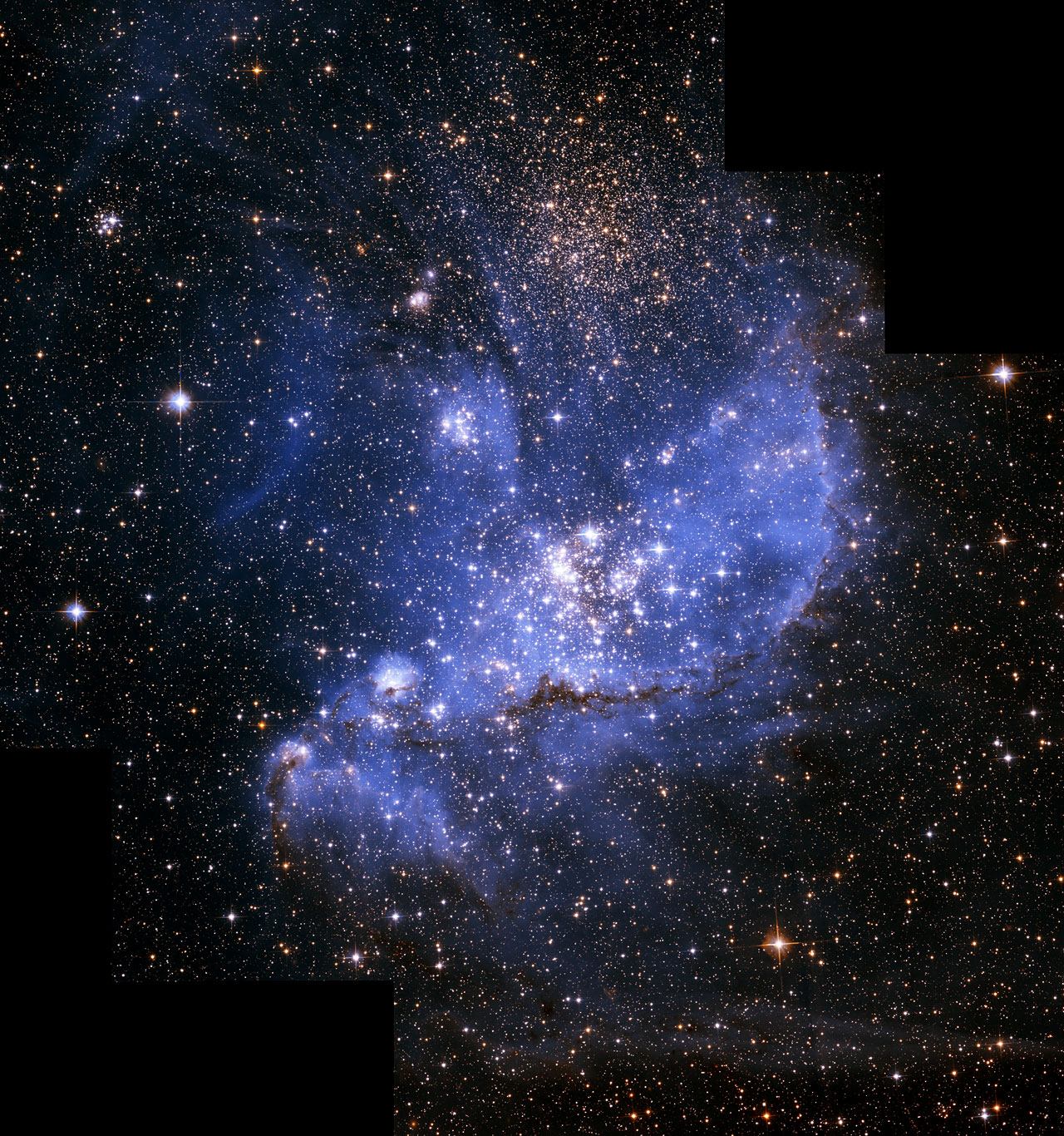Giant, gas-rich planets may have been able to form more easily in the very early universe than they do today, according to astounding new findings from the James Webb Space Telescope (JWST) that corroborate earlier Hubble Space Telescope evidence.
In 2003, Hubble found a massive exoplanet. There’s nothing too unusual about that, but closer inspection revealed the planet, called PSR B1620-26b, to be quite weird. It orbits not one but two objects, a pulsar and a white dwarf. These are the cinders of two dead stars — a massive star that went supernova and a sun-like star, respectively — and was the first circumbinary exoplanet to be discovered (circumbinary meaning orbiting two stars, like Tatooine in “Star Wars“).
The planet lies in a globular cluster, Messier 4, over 6,000 light-years from Earth. Globular clusters are ancient, tightly packed balls of hundreds of thousands of stars. PSR B1620-26b remains the only planet to have been found in a globular cluster.
All of this evidence points to the most unusual thing about PSR B1620-26b, which is that it is very old. Estimates suggest that it formed 12.7 billion years ago, making it the oldest exoplanet known by far.
Yet Hubble’s discovery was controversial. Perceived wisdom had been that planets could not have formed so early in the 13.7-billion-year history of the universe because there hadn’t been enough time for generations of stars to produce many elements heavier than primordial hydrogen or helium, and planets generally need these heavier elements. This is especially true for the dusty, gaseous, planet-forming or “protoplanetary” disks around young stars.
“Current theoretical models predict that, with so few heavier elements, the disks around stars have a short lifetime, so short in fact that planets cannot grow big,” said Elena Sabbi, chief scientist for the Gemini Observatory at NOIRLab in Arizona and a co-author of the new research, said in a statement. “But Hubble did see one of those planets, so what if the models were not correct and disks could live longer?”
Now JWST‘s Near-Infrared Spectrometer (NIRSpec) instrument has found hard evidence that planet-forming disks can survive even when they contain relatively few heavy elements, strongly implying that planet formation was possible early in the universe’s history, even if we don’t fully understand how yet.
JWST excels at observing galaxies in the first billion years of cosmic time, but in this task it was pointed somewhere closer to home: the young star cluster NGC 346 in the Small Magellanic Cloud (SMC), which is a satellite galaxy of the Milky Way about 200,000 light-years away.
Dwarf galaxies like the SMC are often un-evolved when it comes to their chemistry because their history of star formation isn’t very extensive, so they haven’t had a chance to build up many heavy elements, such as carbon, nitrogen, oxygen, silicon or iron. NGC 346, for instance, contains about 10% the abundance of heavy elements that star-forming regions in our Milky Way galaxy have. This makes clusters such as NGC 346 great proxies for studying conditions akin to those found in the early universe.
NGC 346 is still forming lots of stars, and JWST found that many of the young ones, with ages of 20 to 30 million years, still possess planet-forming disks around them. Their existence confounds expectations.
“With Webb, we have a strong confirmation of what we saw with Hubble, and we must rethink how we create computer models for planet formation and early evolution in the young universe,” said Guido De Marchi of the European Space Research and Technology Centre (ESTEC) in the Netherlands, who led the research.
A disk surviving 20 to 30 million years is an exceptionally long time; the protoplanetary disk in our solar system is not thought to have survived that long. The finding suggests that, not only can protoplanetary disks form and survive in environments lacking heavy elements, but they can also last longer, giving planets more time to assemble. While there may not be enough heavy elements to produce lots of rocky worlds, gas giants such as Jupiter and Saturn are mostly hydrogen and helium, which is plentiful everywhere.
Related: Have astronomers found the ‘secret recipe’ for rapid planet growth?

So why do the planet-forming disks around the stars in NGC 346, and presumably stars in the early universe, last so long? De Marchi’s team has two possible explanations.
One is that disks made almost entirely from hydrogen and helium are harder for starlight to blow away. Radiation pressure from the burgeoning star at the heart of the disk is usually what determines the lifetime of a disk, but the process is more efficient when there are heavy, dust-forming elements present in the disk for the star’s photons to push on. Heavy-element-poor disks could therefore last longer.
The second possibility comes back to the formation of the star itself. In a nebula lacking heavy elements, it becomes harder for a gas cloud to collapse into a star; the cloud needs to grow more massive than is typical in the Milky Way today in order for it to grow cold enough for gravity to cause it to collapse. Larger clouds would result in larger disks carrying more mass, and that mass would take longer for the star’s radiation to shift.
“With more matter around the stars, the accretion lasts for a longer time,” said Sabbi. “The disks may take 10 times longer to disappear. This has implications for how you form a planet, and the type of planetary systems that you can have in these different environments. This is so exciting.”
The new findings were published in The Astrophysical Journal on Dec. 16.









Leave a Comment